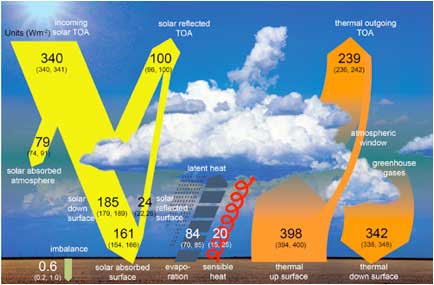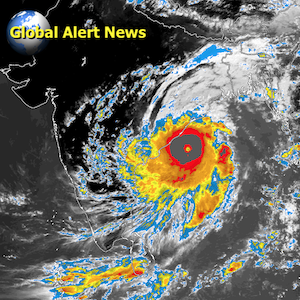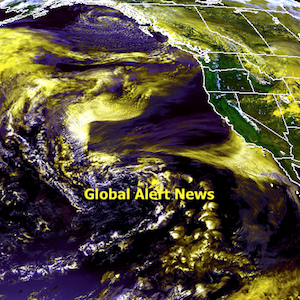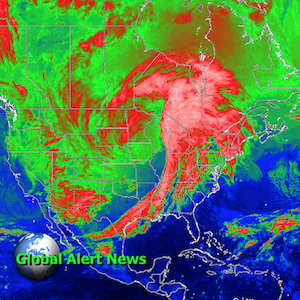Geoengineering Watch Global Alert News, May 11, 2019, #196
Dane Wigington
GeoengineeringWatch.org What price has the planet paid for the âAmerican Dreamâ? The unsustainability of modern industrialized militarized society will become rapidly more evident ...
Climate Change Advocates Ignore Geoengineering
Dane Wigington
GeoengineeringWatch.org Collective efforts are essential If we are to have any chance of exposing and halting global climate engineering operations in time to salvage what yet remains ...

Even a shill publication like Scientific American that supports the idea of global warming does not support the idea of using SO2 to cool the Earth!
Planet-wide geoengineering schemes might work—or bac... View MoreEven a shill publication like Scientific American that supports the idea of global warming does not support the idea of using SO2 to cool the Earth!
Planet-wide geoengineering schemes might work—or backfire. Either way, there is no getting around the need to reduce CO2 in the atmosphere December 9, 2015
LE BOURGET, PARIS—More than 300 watts per square meter of sunshine hits the top of Earth's atmosphere each year. A third is reflected and the sky, sea and land absorb the rest. Much of that warmth tries to escape back to space but only a little over half makes it each year. That proportion is declining as concentrations of gases in the atmosphere, notably carbon dioxide, edges ever upward. The result: global warming.
To a tinkerer's mind there is an obvious solution: block some of that sunlight from coming in. That's the solution known as geoengineering—the large-scale manipulation of the planet’s environment, in this case the sky. As negotiators at the climate talks underway here spar over what to do about adding more CO2 to the air, geoengineering becomes more and more attractive to those with this tinkerer's bent—a group dubbed the "geoclique" by journalist Eli Kintisch in his 2010 book Hack the Planet: Science’s Best Hope—or Worst Nightmare—for Averting Climate Catastrophe. These scientists, engineers and businessmen want to at least study options for blocking sunlight, which they say can be relatively inexpensive when compared with the bill for transforming the trillion-dollar global energy system that largely burns fossil fuels.
Geoengineering is also part of the appeal of big physics, once reserved for hydrogen bombs and subatomic particles. Figuring out how droplets of sulfuric acid sprayed into the stratosphere might offset rising CO2 offers physicists a chance to have a literal global impact. As journalist Oliver Morton details in his new book "The Planet Remade: How Geoengineering Could Change the World," the geoclique is calling the approach "solar-radiation management," to fend off critics who call the sulfur idea far-fetched, or dangerous.
The lexical sleight of hand hasn’t attracted the favor of climate negotiators, although a nation or even an average Internet billionaire could pay for a program to swathe the world in a sulfuric veil, using specially modified jet planes plying the stratosphere. A more speculative and longer-term alternative would be a fleet of self-propelled ships that could seed low-lying clouds across the world's oceans, expanding cloud cover and reflecting more sunlight.
As Morton points out, the massive ships busily moving containers of goods or tanks of fossil fuels across the oceans already form similar tracks, easily visible in satellite images. But 171 countries are working to clean the pollution from those vessels, under the auspices of the International Maritime Organization. Cleaning the emissions may exacerbate global warming, however; fewer polluting particles means less of the cooling, cloudy ship tracks.

The incredibly slow progress in combating climate change worldwide—the Paris talks are the 21st attempt to reach international agreements in the past 25 years—raises the appeal of the seemingly quick fix of seeding the sky. I remember attending a panel on geoengineering with Morton back in the heady days before the 2009 United Nations Climate Change Conference negotiations in Copenhagen. As Morton and his fellow panelists pointed out, with little hope to cut pollution, artificial volcanoes or a fleet of aircraft spewing out sulfur might prove not just enticing but necessary. "We aren't going back to the climate we had before," said Jane Long, a geologist and engineer formerly at Lawrence Livermore National Laboratory, in Copenhagen in 2009. "We are going to be managing the environment—not just the climate but hydrology, soils. We have to learn how to do that."
In short: you break it, you bought it. Industrial civilization owns the climate now, with CO2 concentrations reaching 400 parts per million. There are only two questions, as Morton puts it, borrowing from physicist Robert Socolow of Princeton University. "Do you believe the risks of climate change merit serious action aimed at lessening them?" And "do you think that reducing an industrial economy's carbon dioxide emissions to near zero is very hard?" If you answer yes to both, blocking sunlight might prove an important tool, or even the only one available in the near term.
As Kintisch puts it in his book, however, solar radiation management at this point is "not applied engineering" but "applied conceit." The National Research Council in Washington, D.C., agreed with that view in its 2015 analysis of geoengineering, given that engineering implies a precision in expected outcome—a level of understanding that is unwarranted in this case, thus far. And geoengineering could have unintended consequences worse than climate change itself or end up exacerbating the underlying problem of too much CO2 by mistakenly taking the pressure off to reduce fossil fuel burning.
There is also a fundamental question that remains unanswered: Because any action to fix the climate will affect the whole planet, who will have the authority to unleash actual geoengineering programs?
The production of global warming pollution and the ability to afford technology to do something about it are unevenly distributed worldwide. Global negotiations over the shared sky represent the hard work of earning the ability to deliberately affect the planetary environment. It is the hard work of growing up as a world-changing species, of forging a "we" that could contemplate such a decision. So as the Research Council argues, we should study up on climate interventions but focus the majority of efforts on thinning the blanket of CO2.
That could mean enhancing natural ways for removing the greenhouse gas—more trees, more plankton, more plants and soil. Or inventing new machines to clean the air. "Technofixes are dangerous," says marine biologist and founder of Mission Blue, Sylvia Earle, as a bid to protect the oceans, including the ability to draw down CO2. "It's better to save the systems that are naturally there."
The secret to combating climate change is not some lever to tilt Earth's energy balance but rather to be flexible, to build a system of replaceable parts with as many mutually reinforcing connections as possible to fend off a single, catastrophic failure—in a word, resilience, like that of life itself on this planet and how biology and geology conspire to create the air. "What if instead of garbage patches in the oceans we had tree patches," asked glaciologist Jason Box of the Geological Survey of Denmark and Greenland at an event on oceans here. "Bio-mimicry is the key rather than a space age technofix."
In the case of the best planet we will ever have, it is more important to be wise than clever. Solar-radiation management sometimes feels like a last gasp from big physics. There is no getting around the need to cut CO2, whether sunlight gets blocked or not, as even the most ardent geoengineers agree. There is plenty in that grand challenge for those with a tinkerer's bent.
...................................
ABOUT THE AUTHOR(S)
David Biello
David Biello is a contributing editor at Scientific American.
Recent Articles
China's Xi Outshines Trump as the World's Future Energy Leader
Cleaning the Air with Plastic [Excerpt]
Fact or Fiction?: Premium Gasoline Delivers Premium Benefits to Your Car
Blocking the Sun Is No Plan B for Global Warming
Planet-wide geoengineering schemes might work—or backfire. Either way, there is no getting around the need to reduce CO 2 in the atmosphere
DNA is a fractal antenna in electromagnetic fields. - PubMed - NCBI
Int J Radiat Biol. 2011 Apr;87(4):409-15. doi: 10.3109/09553002.2011.538130. Epub 2011 Feb 28.
Geoengineering Watch Global Alert News, May 4, 2019, #195
Dane Wigington
GeoengineeringWatch.org Are more now beginning to comprehend the destruction being created from industrialized militarized societies? Will a significant percentage of the population wak...
Duty To Warn: Three Profoundly-Important, Science-Based Articles From India With Observations On The US Sanctioned “Vaccine Holocaust Of Newborns, Infants And Children”
Duty To Warn: Three Profoundly-Important, Science-Based Articles From India With Observations On The US Sanctioned “Vaccine Holocaust Of Newborns, Infants And Children” (Whose parents, it needs to be ...
Geoengineering Watch Global Alert News, April 27, 2019, #194
Dane Wigington
GeoengineeringWatch.org As government criminality is increasingly coming to light, truth is increasingly becoming the target of power structure suppression. How is the medical industria...
Jamie Thomas – Last Man Standing
Exposing the climate geoengineering cover-up
Geoengineering Watch Global Alert News, April 20, 2019, #193
Dane Wigington
GeoengineeringWatch.org The annual Earth Day celebration has come again, how much additional damage has been inflicted to our environment in the last year? How much longer can the whole...
Geoengineering Watch Global Alert News, April 13, 2019, #192
Dane Wigington
GeoengineeringWatch.org As the saying goes, sometimes it must get worse before it gets better. We would do well to consider this premise as climate intervention operations accelerate an...
page=19&callback_module_id=pages&callback_item_id=101&year=&month=
View More

 gerrythehat and Michael reacted to this.
gerrythehat and Michael reacted to this.  RustyDodge likes this.
RustyDodge likes this. 




















